Way down in Kokomo
It’s the Fiji island where the surrender to indulgence makes returning to the constraints of civilisation difficult indeed.

There are moments in life when time seems to slow down so you can take in what is going on around you and record every detail before it passes. It’s as if your brain knows you must remember this experience. This is what happens when you land at Kokomo Private Island.
It was grey and raining when we took off from Fiji’s Nadi Airport in an 11-seater seaplane flown by two pilots with welcoming smiles, crisp white shirts and no shoes. We flew for 45 minutes in dense cloud, only glimpsing the South Pacific below as we bumped our way through less-than-ideal weather. But then the clouds cleared and there it was: the white beaches, the lush green rainforest, the crystal blue water and the idyll that is Kokomo.

As we walked down the steps of the plane and onto the jetty, the setting sun behind us threw a golden light over the island. Then we heard the music. “Hurry up, they are waiting for us, they are singing for us,” I remember one of my colleagues impressing on me as I walked in what seemed slow motion, trying to take it all in. The sound of the staff singing in joyous welcome, the smell of the floral lei they placed around our necks, the sweet taste of the whole coconuts we drank from with a straw – all of it bathed in a magical light. Was it real?
“I would not tackle this if I wasn’t going to give it 200 per cent,” says Lang Walker, the owner of Kokomo Private Island, enjoying a glass of rosé and a plate of fresh sashimi as he looked out across the sea. “The minute you walk onto the island, the experience, the people, the food, the drinks, the fun – you have to have people saying, wow, this is heaven on a stick, this is the best place in the world.”
Walker, worth $3.58 billion and ranked 16th in The List: Australia’s Richest 250, first came across Yaukuve Levu Island in 2011. The property developer had been holidaying in Fiji for almost 50 years (it was the first trip he took outside Australia with his wife Sue) but spent most of that time on his boat, Kokomo, as the couple and their family became keen divers. His friend was on that boat when he came across the island, which was home to a half-built – but abandoned – Aman resort.
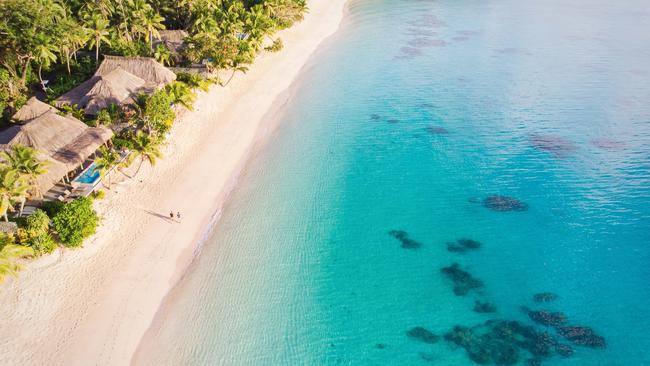
“It was at a time in 2006 when there was a military coup,” recalls Walker. “The developers went broke and they hadn’t done very much. They had just done a few structures, but by then it was incredibly overgrown. My friend thought, this is amazing, and if you anyone can fix it up it is you. I thought, I don’t know, it is nice cruising an island but I don’t know about owning one.”
His friend kept sending Walker videos and photographs anyway, and he finally made it to the island 18 months after that first call. “I had a look at it and thought, wow, this place is magic, this could be the best resort in the world,” says Walker. “This is when the journey started.”
Eight years later, plus a lot of hard work and a lot of money (at least $100 million) and Kokomo Private Island has received multiple awards (Condé Nast’s Hot List, Travel & Leisure’s It List and Luxury Travel Magazine’s Gold List) as well scores of gushing reviews (“The first place I cried when I arrived and cried when I left. It is heaven on earth” is one example). There are 21 private beachside villas as well as five luxury residences tucked away in the lush landscape of the 140-acre island.
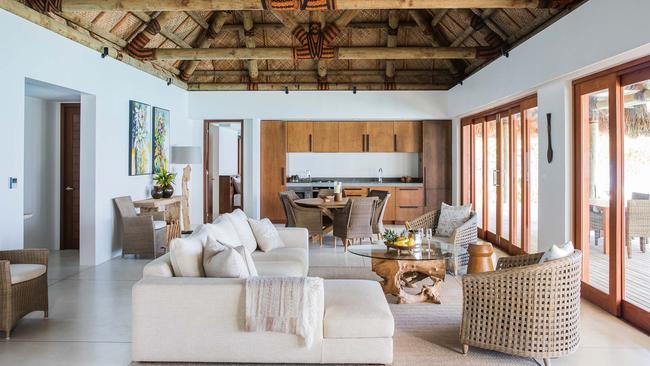
“We have had so many letters and emails of congratulations, and most of it always comes back to the people and how good the people are,” Walker says. “Physically, the place is just beautiful; the buildings I had to make very practical and generous and that is the hardware. The thing that makes this place is what I call the software; there’s the people and the friendliness of the people, the laughter and fun with all the locals, as well as the experiences and the food.”
It is not hard to fall in love with the Fijian people and those who work on Kokomo Island. Not only do they sing to herald your arrival (that has never happened before to this scribe), but they happily greet you with “bula, bula!” every time you cross paths. It is the Fijian way of saying hello but the literal meaning is life – which is rather apt given the enthusiasm they exude every time they use the word. And that is a lot. Everyone, from waiters to gardeners, drivers, chefs, scuba diver instructors and basically everyone you pass greets you with this expression.
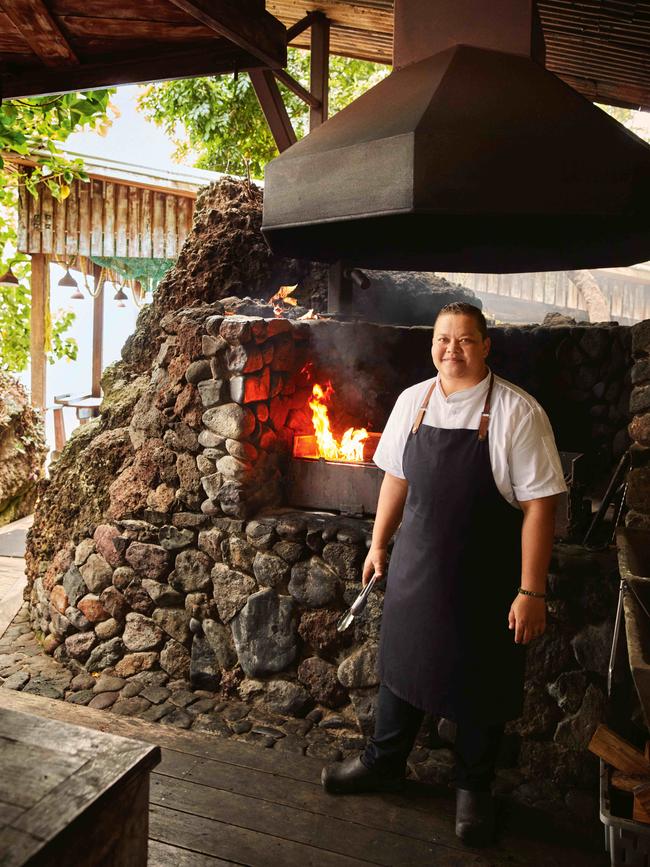
One of more extraordinary staff members is chef Caroline Oakley. Ten minutes after meeting her, you want to ditch the “bula, bula” and just go straight in for a hug instead. She holds court at Walker D’Plank, one of three dining venues on the island, a more casual option that focuses on Asian-inspired street food. Located just behind the jetty and overlooking the turquoise blue water, it is a place where you can easily spend hours watching the sunset with a drink in hand and eating way too much of Oakley’s delicious food. “I like our guests to roll home,” she says, laughing. She doesn’t have a menu as such, she just chats to guests and cooks to order based on the conversation.
It fits the 39-year-old’s cooking style perfectly as she doesn’t really use recipes. Oakley is self-taught and all her knowledge comes from cooking with her family. She grew up in Nausori, which is back on the Fijian mainland, about 20km from the capital Suva, and learnt by watching her parents and godparents. “We used to just cook everything and anything we can see and use what is fresh and whatever is tasty,” she tells WISH. “It’s cooking from the home and it’s cooking for guests.”
That translates to such dishes as fresh platters of sashimi from fish caught (often by guests), her famous coconut prawn curry, chicken dumplings and coconut ceviche – all shared by everyone at the table.
“It’s a feast,” she says, when asked how to describe traditional Fijian cuisine. “We put everything down in the middle of the table.” There are also significant Indian and Chinese influences in Fijian food, thanks to the tiny nation’s immigrant populations. The “Fijian street food” flavours that Oakley incorporates in her dishes come from smoking over the woodfired grill she has at Walker D’Plank as well as using limes, coconut and lots of seafood.
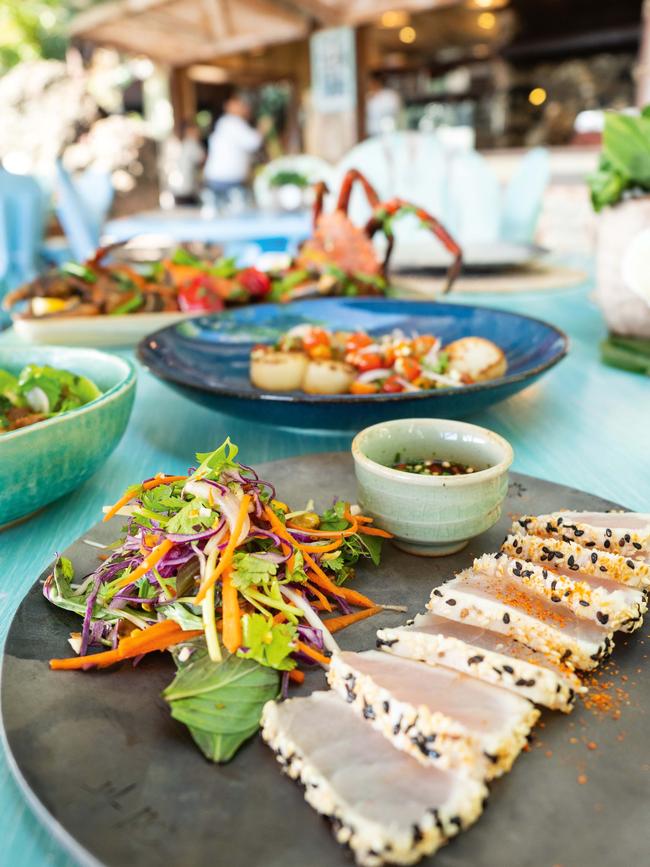
“We also use seawater in our cooking,” she explains. “We use it in broths for the prawn curries. And whenever we can get a lobster we cook it the same day.” Oakley prepares her lobsters Singapore-style with lots of chilli, depending on the preference of the guests. “I just cook from the heart,” she says of her main inspiration. “And it makes me happy to see other people happy.”
She also wants to change visitors’ perceptions of food in Fiji, which are so often dominated by mediocre resort food. “We want people to come here for the cuisine,” she says. “Here we use the freshest ingredients every day and just celebrate it every day.”
This is also Cory Campbell’s aim. The ex-Noma, ex-Vue De Monde chef this year took over as executive chef at Kokomo and oversees its three restaurants (Walker D’Plank, The Beach Shack and Kokocabana), a plethora of other private dining options, a 5.5 acre farm and about 50 staff. Having spent years at the world-famous Noma in Copenhagen, he is very much a proponent of eating what is around you, using the freshest possible produce and letting the flavours speak for themselves.
“Fiji is not known as a dining destination,” Campbell tells WISH in the middle of two rows of banana trees. “That is what I really emphasise to my team. Let’s make it a fine dining destination. It’s such a beautiful place to come to, let’s blow the guests away with our food.” There are rows and rows of lime trees, paw paws, bananas and pineapples, as well as tomatoes, passionfruit, eggplants, string beans, lettuces, herbs, to name just a few. There are also beehives and free-range chickens. They even get the salt from the island’s own desalination plant – one of the many sustainable and recyclable processes in place (all veggie waste gets turned into compost and rocks are even made into plates).
“There is fantastic produce that we have here in Fiji,” Campbell says. “And we have a great climate to grow things here all the time, longer than their usual seasons.” Campbell and his team of head chefs – Oakley, Vincenzo Maione, Shaun Thomson and pastry chef Jon Gladson – use as much local food as possible and only bring in what they need from the Fiji mainland and Australia (such as beef and lamb). Campbell also likes to create experiences for his guests, to give them a bit of theatre, as he did when he oversaw Shannon Bennett’s Vue De Monde for six years. This includes private dinners at various venues around the island, as well as farm tours and deep fishing expeditions.
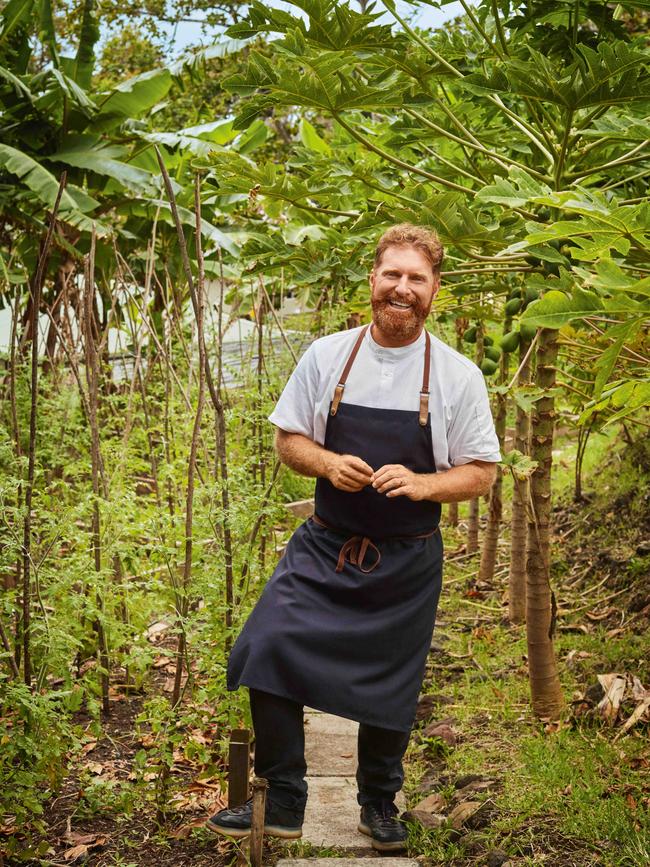
Campbell hosted a dinner for WISH at his own residence, underneath the helipad, which he shares with his wife Kim, who works as the island’s naturopath and alternative health practitioner, and their 22-month-old son Aiden. He served local butterflied prawns cooked on the barbecue, fish wings with chilli jam and mayo, sashimi-style bream with spiced tomatoes, wagyu steak and smoked tomato, basil and papaya salad. “Take your time,” he told us. “It’s the Fijian way.”
We did not, however, take his advice as the food was far too delicious to leave lying around on the plate for too long. This was especially true for the dessert, called coconut textures and made mostly of coconut (think coconut sago, coconut ice-cream and coconut granita). A cheese plate was also wolfed down at such speed that those sitting at the other end of the table didn’t even get a look-in.
The “Fijian way” was also something we very much experienced while at Kokomo – a slower, happier, more relaxed way of life. It is a pace that allows you to take in what is around you, from the vibrant red of the hibiscus flowers growing in the lush tropical gardens and scattered throughout your villa (some even be seen on the steering wheels of the golf buggies) to the serenity of the Yaukuve Spa Sanctuary, where yoga, massages and facials take you to that next level of bliss. And Kim Campbell’s naturopathic advice means you can take that approach to wellness home.
It also allows you to laugh when a Fijian guide’s concept of time turns a walk that was repeatedly promised to take “10 minutes” into a two-hour hike through Fijian villages, trekking knee-deep in mud through the rainforest and scrambling barefoot up a river to a breathtaking waterfall (see this month’s cover). This experience makes finally standing underneath the cool spray of said waterfall even more satisfying as well as forever changing for all involved the definition of 10 minutes.
After four days on Kokomo, and having fully adapted to the wonderful slowness that is “island time”, it is with great reluctance that we pack our bags and head back to the real world. The staff are there again, in the lobby of the Beach Shack, to sing farewell, and the moment is tinged with sadness for everyone as we walk up to the jetty to board the seaplane home. But reality truly hits when we fly back into Nadi and the pilots – wearing shoes this time, as if to guide us back to the constraints of civilisation – land on the grey concrete runway instead of the turquoise waters of the South Pacific.


To join the conversation, please log in. Don't have an account? Register
Join the conversation, you are commenting as Logout